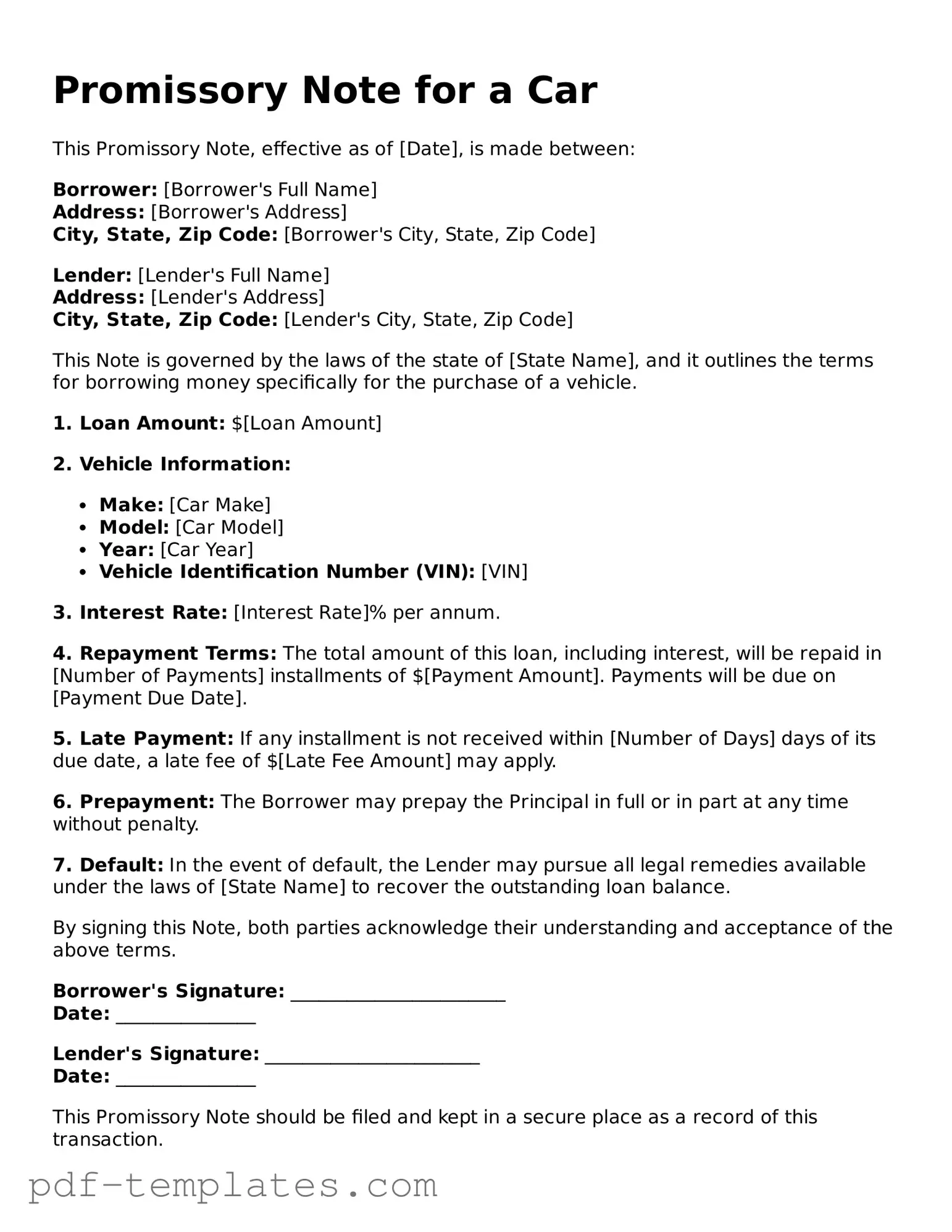A Loan Agreement is similar to a Promissory Note for a Car in that both documents outline the terms of a loan. They specify the amount borrowed, the interest rate, and the repayment schedule. While a Loan Agreement may include additional details such as collateral and default provisions, both documents serve the same fundamental purpose: to create a binding obligation for the borrower to repay the lender.
A Sales Contract, particularly for vehicles, shares similarities with a Promissory Note for a Car. Both documents facilitate the transfer of ownership and include essential information like the purchase price and payment terms. The Sales Contract, however, focuses more on the sale transaction itself, while the Promissory Note emphasizes the borrower's commitment to repay the loan used to finance that purchase.
An Installment Agreement also resembles a Promissory Note for a Car. This document outlines a series of payments over time, typically for a significant purchase. Both agreements detail the payment amounts, due dates, and consequences of non-payment. The key difference lies in the context; an Installment Agreement often applies to various types of purchases, while the Promissory Note specifically pertains to vehicle financing.
A Lease Agreement can be compared to a Promissory Note for a Car, especially when it comes to vehicle leasing. Both documents outline financial obligations and responsibilities. However, a Lease Agreement focuses on the terms of renting a vehicle rather than purchasing it. This includes monthly payments, lease duration, and conditions for returning the vehicle at the end of the lease term.
When engaging in vehicle-related financial transactions, it is essential to have the appropriate documentation in order, including a Florida Promissory Note, which outlines the terms of the loan. To further understand the necessary forms and ensure compliance with legal requirements, refer to All Florida Forms for comprehensive resources.
A Secured Note is another document that bears resemblance to a Promissory Note for a Car. Both are types of promissory notes, but a Secured Note is backed by collateral. In the case of a car loan, the vehicle itself often serves as collateral. This means if the borrower defaults, the lender has the right to repossess the vehicle, ensuring protection for the lender.
An Affidavit of Debt can also be likened to a Promissory Note for a Car. While an Affidavit of Debt is a sworn statement confirming the amount owed, it can serve as evidence of the debt in legal proceedings. Both documents confirm a borrower's obligation to repay a loan, but the Affidavit may be used in situations where the borrower disputes the debt or in collection actions.
Finally, a Mortgage Note is similar in structure to a Promissory Note for a Car, as both are legally binding documents that outline loan terms. A Mortgage Note is specifically used for real estate transactions, detailing the borrower's promise to repay a mortgage loan. While the subject matter differs—real estate versus vehicles—the underlying principles of loan repayment and borrower obligations remain consistent.
